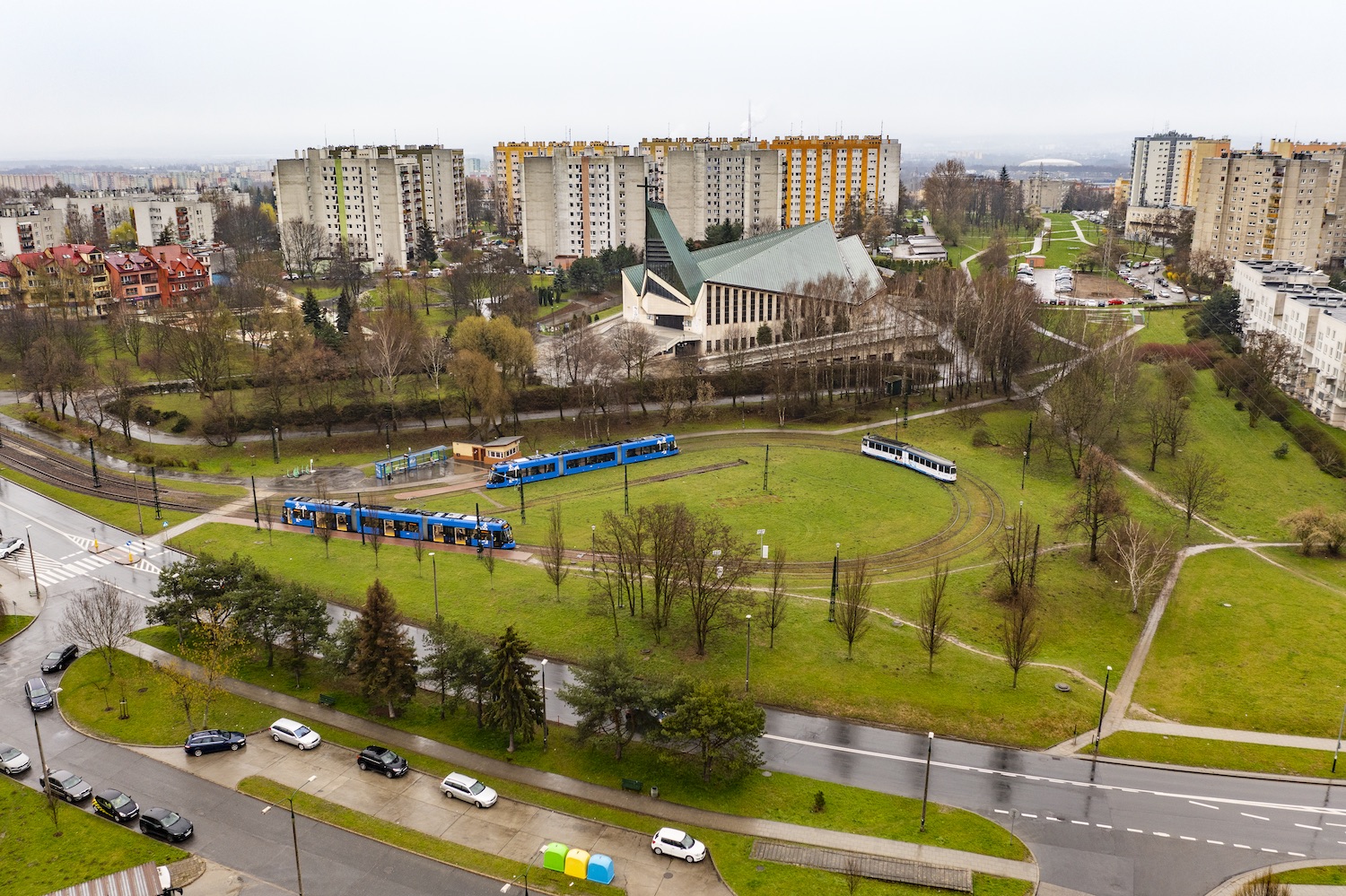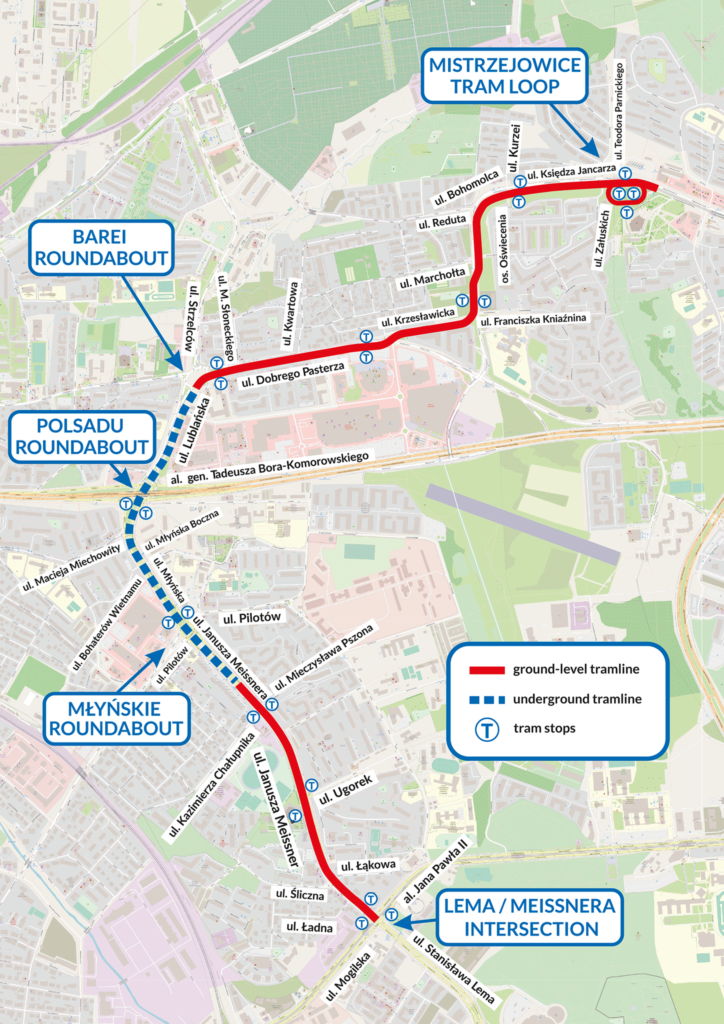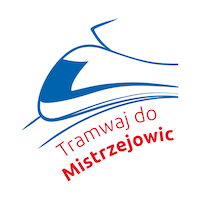A new tram road of the Kraków Fast Tram (KST, stage IV) of approx. 4.5 km will connect Mistrzejowice with the intersection of Meissnera and Lema Streets, which will reduce the travel time to the city center by approx. 12 minutes. The passengers will use the connection in 2025. It is the first time that such a large transport project is implemented in the model of public-private partnership (PPP) in Poland.
For Residents


Frequently asked questions
Why is the tram road to Mistrzejowice being constructed?
In order to get from Mistrzejowice to the first Cracow ring road, the tram has to cover the distance of 11 km, running through Nowa Huta. Thanks to the new route along: Jancarza, Bohomolca, Dobrego Pasterza, Lublańska, Młyńska and Meissnera Streets, the distance between this northern district and the city center will be reduced by approx. 12 min.
The new tram line will also be a more comfortable means of transport for residents of Mistrzejowice and Prądnik Czerwony, who use bus lines now. A standard bus used by MPK has 30 seats and an articulated bus – 50 seats, whereas a tram can have even 93 seats. Use of vehicles of higher capacity enables transporting more passengers in more comfortable conditions.
What does it mean that the project is implemented in the PPP model?
PPP (public-private partnership) is a model of implementation of public investment projects assuming a long-term cooperation of a public partner (e.g. commune) and a private partner (company or consortium). In that perspective, an investment project does not generate virtually any costs during the design and construction stage for the first of them. Financial involvement of the commune starts only once the residents can use the outcome of the project.
In the PPP project consisting in the construction of a tram road to Mistrzejowice, the private partner (consortium of PPP Solutions Polska and Gülermak) is responsible for designing, funding and implementing the project, and – after the handover of the tram road into operation – for maintenance of the road for a periof of 20 years. Cracow Municipality (public partner) will pay the private partner remuneration for operation and maintenance of the tram road only after its opening, and after 20 years, it will take over the road for administration. Such an arrangement allows not only spreading financing of the project but also benefiting from the experience of the private partner. It will propose innovative solutions thanks to which the highest quality can be ensured during the operation of the infrastructure so that unnecessary cost related to its maintenance for a longer period of time can be avoided.
What does the project involve apart from construction of a tram road?
Apart from an approx. 4.5-km long tram road section connecting the existing terminus in Mistrzejowice with the intersection of Meissnera and Lema Streets, a completely new urban space along the road will be created. Along the full length of the track bed, separated bike paths and pedestrian paths will be constructed. The existing road layout will also be altered thanks to which safety of all road users will be enhanced. Vegetation management, providing for protection of the largest possible number of existing trees, compensation and ornamental plantings as well as green trackbed technology, will help create a resident-friendly space around the modern tram road.
Is any tree felling planned?
The aim of the private partner is to limit the interference in urban greenery, thus it intends to preserve as many trees as possible already at the designing stage. Therefore, it ordered a detailed predevelopment plan for this area. The collected data are now being compared with the possessed maps and information from the environmental decision. On the basis of that comparison, detailed alteration designs as well as landscaping designs will be drawn up.
Location and condition of each tree is being analyzed separately. The trees conflicting with the planned infrastructure will be transplanted if their condition allows it. Additional plantings (including ornamental plantings) are planned as well as adoption of green trackbed technology to the largest possible extent.
Were will the stops be located?
The project assumes construction of new stops and alteration of the existing stops, the provisional location of which is as follows:
– at the intersection of JPII, Lema and Meissnera Streets,
– in the area of Ugorek Street,
– in the area of intersections with Pszona and Chałupnika Streets,
– in the area of Młyńskie roundabout,
– in the area of Polsadu roundabout,
– in the area of Barei roundabout, in Dobrego Pasterza Street,
– in Dobrego Pasterza Street, in the area of Krzesławicka Street,
– in Bohomolca Street, in the area of Kniaźnina Street,
– in Jancarza Street, in the area of Oświecenia Estate,
– at the altered Mistrzejowice terminus.
How will Młyńskie roundabout be altered?
There will be a solution providing for the tram road running in the area of Młyńskie roundabout at -1 level (in an open tub structure), and vehicle traffic running at the existing ground level.
When are construction works planned to start; what impediments will be there?
The project of the tram line to Mistrzejowice received a permit for the implementation of a road investment (ZRID) on May 9, 2023. The first works began on July 3, 2023.
Works will be performed in stages along with implementation of temporary traffic arrangements which will have to be agreed on and approved by municipal entities and services. Prior to implementation of any changes in the traffic circulation system, the private partner will notify local residents and passengers using urban transport of such changes in advance. Access to private properties will be maintained, and works will be carried out in the least burdensome manner.
What solutions minimizing the environmental impact of the project are planned to be adopted in Meissnera Street?
On the final straight of the designing stage, the private partner was ordered to make some corrections in the design concerning mostly Meissnera Street. Their aim is to minimize the environmental impact of the project. Thanks to the corrections consisting in, among others, limitations for heavy vehicles, planned bus fleet replacement with electric fleet as well as use of noise-reducing pavement, it will be possible to reduce the number of noise walls along the project. Additionally, approx. 200 trees will be preserved and more space will be gained for new plantings.
Work technology
The private partner is using BIM (Building Information Modelling) technology throughout the investment process, which allows control of the project at every stage. For the body of the underground tram station, it will use the substructure method and will also use innovative solutions for internal installations, such as power supply.
Glossary
Design concept
The design concept is one of the first stages in the preparation of project documentation, which can be regarded as a basis for determining its further details. It is used in the process of analysing the development conditions and land use, as well as developing the project programme and concept. It is also the basis for determining approximate financial outlays, selection of the investment standard or materials needed at the stage of implementation. It is a kind of introduction to design work preceding the creation of the so-called functional and utility programmes. The concept is an essential element of the application for a permit to realise the investment (ZRID decision).
Contract engineer
The primary task of the contract engineer is to control the reliability of the investment preparation and implementation processes. He supervises, among other things, the execution of the project in accordance with the tender documentation, the execution of construction works and the schedule of the entire project.
Construction project
The construction project is a study necessary for obtaining a building permit and its subsequent implementation. It should include, among other things, a land development design, specifying the boundaries of the project, its location, outline and layout of all existing and designed buildings, networks, etc. All construction designs must be carried out by persons with the appropriate qualifications.
Executive design
The executive design is a supplement to and a more detailed version of the construction design, serving the purpose of drawing up a works estimate, construction cost estimate, preparation of bids by the contractor, and – finally – execution of the works themselves. It makes it possible to specify the works related to the investment and to better control the scope of the works carried out. The technical documentation presented in it includes drawings on an appropriate scale and a detailed description of individual solutions, architectural details, construction devices, installations and technical equipment. The detailed design also includes information on the preparation of the site for construction and the planned works.
ZRID
The ZRID, i.e. the Decision on Authorisation to Execute a Road Investment, is the final element of the planning process for a project such as the construction of a tramway line. It is a kind of confirmation that all documents necessary to start works have been completed. Its issuance signifies approval of the construction project and is the basis for handing over the land for the investment to the contractor. The ZRID may be immediately enforceable, which means that the contractor has the right to start construction immediately, without waiting for the decision to become final.

